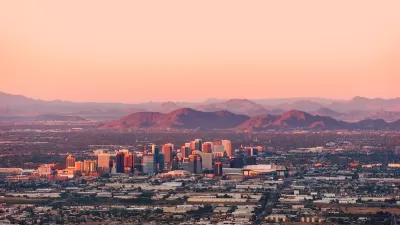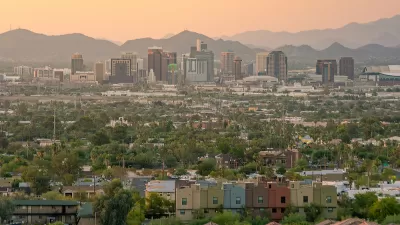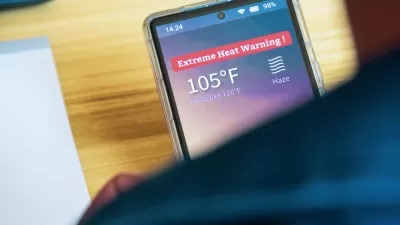Extreme heat events like the ‘heat dome’ that baked Southern California last summer kill a disproportionate number of people experiencing homelessness, who have fewer resources to protect themselves from the scorching sun.

Extreme heat waves are responsible for a growing number of deaths among unhoused people in Los Angeles, reports Summer Lin in the Los Angeles Times. “Although the unhoused population represents about 70,000 of Los Angeles County’s more than 9.8 million people, they accounted for nearly half — 5 in 12 — of deaths from heat illness or heat exposure last year, according to data from the coroner’s office.”
As Lin explains, “Heat-related illness and death are “notoriously” undercounted because patients in emergency rooms are frequently diagnosed with other medical conditions, such as dehydration and kidney failure, without any mention of their high temperatures and exposure to heat, according to David Eisenman, a professor specializing in climate change at the UCLA Fielding School of Public Health.”
Larry Kalkstein, the president of Applied Climatologists, estimates that up to 2,000 people die of heat-related causes every year, which would make heat deadlier than hurricanes, tornadoes, and snowstorms. This number will only rise as climate change causes longer and more severe heat waves, and unhoused people face some of the highest risks.
“More than a quarter of the lives lost during heat waves could have been saved if cities implemented measures to provide tree canopy, vegetation and reflective materials in roofing, sidewalks and other infrastructure, according to a March 2022 article co-written by [UCLA researcher Edith De Guzman].” In addition to these measures, cities can make more cooling centers available to all residents, so unhoused people don’t have to rely on private businesses that may be hostile to them.
FULL STORY: Heat waves are killing more L.A. homeless people

Study: Maui’s Plan to Convert Vacation Rentals to Long-Term Housing Could Cause Nearly $1 Billion Economic Loss
The plan would reduce visitor accommodation by 25,% resulting in 1,900 jobs lost.

North Texas Transit Leaders Tout Benefits of TOD for Growing Region
At a summit focused on transit-oriented development, policymakers discussed how North Texas’ expanded light rail system can serve as a tool for economic growth.

Using Old Oil and Gas Wells for Green Energy Storage
Penn State researchers have found that repurposing abandoned oil and gas wells for geothermal-assisted compressed-air energy storage can boost efficiency, reduce environmental risks, and support clean energy and job transitions.

Santa Barbara Could Build Housing on County Land
County supervisors moved forward a proposal to build workforce housing on two county-owned parcels.

San Mateo Formally Opposes Freeway Project
The city council will send a letter to Caltrans urging the agency to reconsider a plan to expand the 101 through the city of San Mateo.

A Bronx Community Fights to Have its Voice Heard
After organizing and giving input for decades, the community around the Kingsbridge Armory might actually see it redeveloped — and they want to continue to have a say in how it goes.
Urban Design for Planners 1: Software Tools
This six-course series explores essential urban design concepts using open source software and equips planners with the tools they need to participate fully in the urban design process.
Planning for Universal Design
Learn the tools for implementing Universal Design in planning regulations.
Ascent Environmental
Borough of Carlisle
Institute for Housing and Urban Development Studies (IHS)
City of Grandview
Harvard GSD Executive Education
Toledo-Lucas County Plan Commissions
Salt Lake City
NYU Wagner Graduate School of Public Service





























